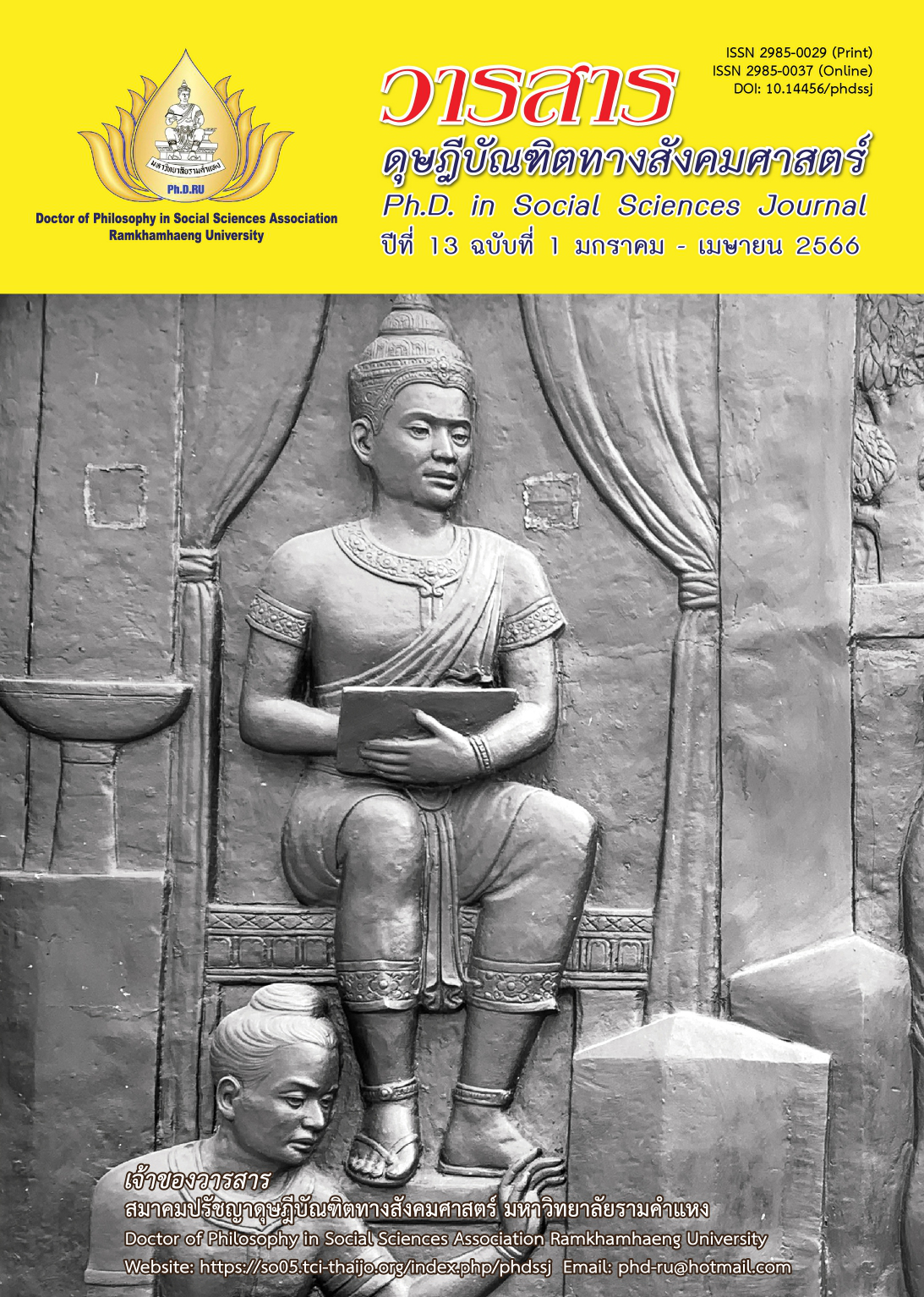A Model of the Chinese Buddhist Sangha Order Administration in Thailand
Main Article Content
Abstract
This research article aims to study the present administration and problems of the Chinese Buddhist Sangha in Thailand, and to seek for the path and the appropriate model to develop the organization administration. The research was a quality research method studied from selected 4 temples. Structured in-depth interview including various sources of secondary data, interview and focus group discussion were conducted. Data analysis was administrated by content analysis method and presented by description following descriptive analysis.
The results of the research revealed that: (1) the 6 present administrative aspects of the Chinese Buddhist Sangha in Thailand, namely, administration, religion, public support, propgation, educational support, and public service have slowly been going on with a few problems. The administative figure analyzed through 14 items of Henri Fayol’s ideology was effective and efficient. However, the weak point of the administration was insufficient publicizing the organization and the missions done. (2) 6 missions of the Chinese Buddhist Sangha related to 6 strategies of the 20-year National Development Strategies following 12th National Economic and Social Development Plan while other 4 did not. (3) The guideline to develop the administration synthesized through the consideration of the focus group meetings was “APESPA”.
Article Details

This work is licensed under a Creative Commons Attribution-NonCommercial-NoDerivatives 4.0 International License.
Academic articles, research articles, and book reviews in the Ph.D. in Social Sciences Journal are author’s opinions, and not the publisher’s, and is not the responsibility of the Ph.D. in Social Sciences Journal Philosophy Association, Ramkhamhaeng University. (In the case that research is done on human, the researcher has to be trained in Ethics for Doing Research on Human Training and has to produce the evidence of the training).
References
Anampoch, O. (2013). The development of the effective management in Anamikaya Sangha in Thailand. Doctoral Dissertation of Philosophy in Buddhist Studies, Mahachulalongkornrajavidyalaya University. [In Thai]
Deeradorm, A. (1983). The role of Mahayana Buddist Sangha towards social development: A case study towards Chinese Sangha and Anamikaya Sangha in the Central Part of Thailand. A Master’s Thesis of Sociology, Thammasat University. [In Thai]
Fayol, H. (1930). Industrial and general administration. McGraw-Hill.
Kantitammo, S. (2017). Future Thai Buddhist Sangha administration model. Doctoral Dissertation of Philosophy in Buddhist Studies, Mahachulalongkornrajavidyalaya University. [In Thai]
Khanlae, K. (2017). Model and conservation of continuing rites and practices of Anumnikaya Buddist Sangha in Thailand. Doctoral Dissertation of Philosophy in Buddhist Studies, Mahachulalongkornrajavidyalaya University. [In Thai]
Komlittipong, K. (2007). The management of Buddhist Chinese Sangha in Thailand. Doctoral Dissertation of Philosophy in Buddhist Studies, Mahachulalongkornrajavidyalaya University. [In Thai]
Marcoulides, G. A., & Heck, R. H. (1993). Organizational culture and performance: Proposing and testing a model. Organization Science, 4(2), 209-225.
Office of the National Economic and Social Development Council. (2016). The 12th National Economic and Social Development Plan (2017–2021). Author. [In Thai]
Paitayawat, S. (2016). Opening space of society and culture to propgate Mahayana Buddhism in the city of Chinese Buddhist Sangha: A case study of Watmangkornkamalaward (Leng-nei-yhee) Bangkok. Suan Sunandha Rajabhat University, Research and Development Institute. [In Thai]
Pfiffner, J. M., & Sherwood, F. P. (1962). Administrative organization (3rd ed.). Prentice Hall.
Phrarajaworametee. (2017). A strategic plan to reform Buddhist missions 2017-2020: Policy implementation. Mahachulalongkornrajavidyalaya University Press. [In Thai]
Phratampariyatsopon. (2005). Buddhist Sangha and Buddhism (3rd ed.). Mahachulalongkornrajavidyalaya University Press. [In Thai]
Phrateppariyatmetee. (2018). Strategy towards Buddhist Sangha organization management through process and effectiveness. Retrieved from http://ir.mcu.ac.th/content/2561/16.%20กลยุทธ์กาาบริหาร%20(195-205).pdf [In Thai]
Procter, P. (1981). Longman dictionary of contemporary English. Longman.
Putapoompitak, W., & Inwarng, K. (2011). Organizational theory and management. Phitsanulok University Press. [In Thai]
Sangkawichit, N. (2015). The administration of present Buddhist Sangha in Thailand. Master’s Thesis of Arts in Buddhist Studies. Faculty of Fine Art. Thammasat University. [In Thai]
Satsanguan, N. (2000). Anthropology: Physical development and culture. Chulalongkorn University Press. [In Thai]
Smith, H. R., Carroll, A. B., Kefalas, A. G., & Watson, H. J. (1980). Management: Making organizations perform. Macmillan.
Steyn, B., & Niemann, L. (2013). Strategic role of public relations in enterprise strategy, governance and sustainability: A normative framework. Public Relations Review, 40(2), 171-183.
Suntara, T. (1997). Mahayana Buddhism in Chinese Sangha and Anumnikaya Sangha. Mahachulalongkornrajavidyalaya University Press. [In Thai]
Willer, D. (1986). Scientific sociology: Theory and method. Prentice Hall.


